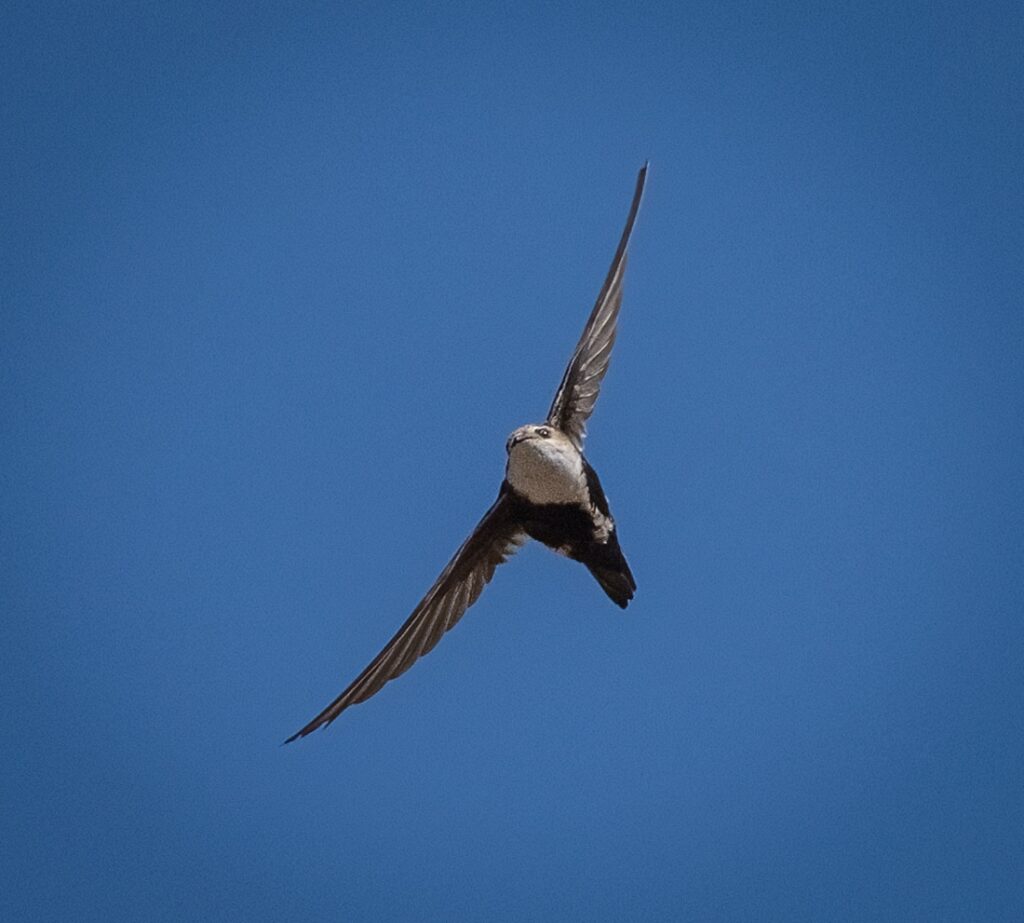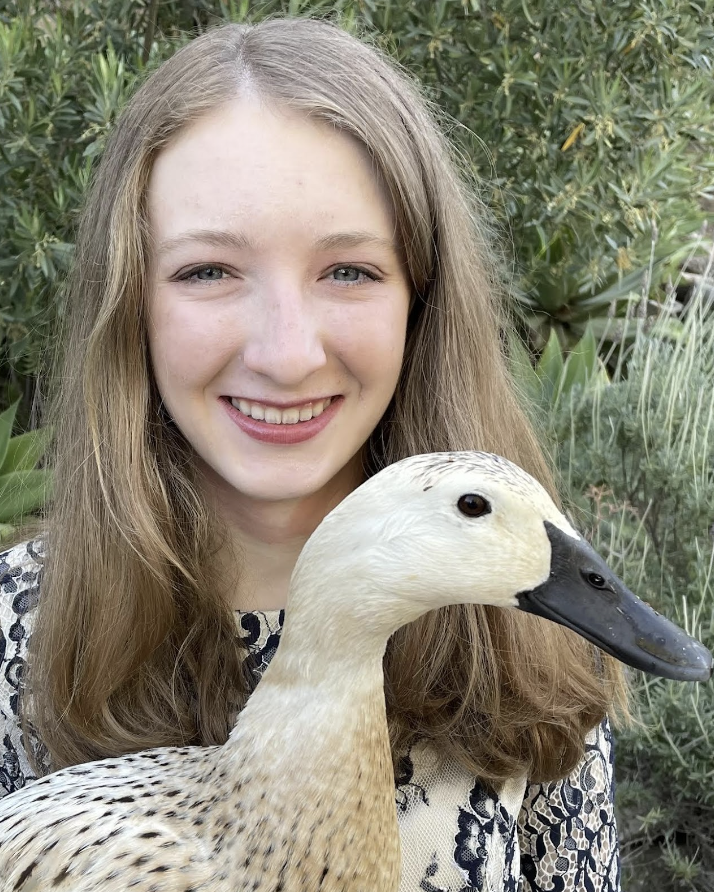
By ABA Young Birder Ava M.
The sky was a faded blue with hints of lilac, a few wispy clouds strewn about. Most of the bird activity had quieted for the day, but I still glanced up at that sky as I wandered about my yard, ever watchful and waiting. It was a beautiful sky, but I had on my mind something that would make it even more lovely. In June, I knew my chances were running out, but if I looked up at the right time, perhaps I might see them. I now stared down, my thoughts turning to how hopeless my quest truly was. Then I realized that if I wanted to see these birds so badly, I should simply go to them. This would not be so simple, though; the nearest reliable spot to see them was an hour and a half away, followed by a hike up a mountain in the summer heat.
I never did go and see the Black Swifts that June, and the birds remain elusive ghosts in my mind, unseen on their summering grounds and even less so on migration. I believe it is the elusiveness of these birds that make them appealing to birders; indeed I well understand how these birds so occupy the mind, yet remain shadows.
That same summer evening, as I mused about the swifts I wanted so badly to look up and see, I picked up a duck feather on the ground and twirled it between my thumb and index finger, mind still wandering. I wondered if a Black Swift had ever flown over me before. I wondered if I had ever breathed in a bit of Black Swift breath before, or a particle of a swift itself. This set me down a different, more abstract path, and I returned to something I recently learned in Physics. According to my textbook, “every time you breathe…only some of the atoms that you inhale are exhaled in your next breath. The remaining atoms are taken into your body to become part of you, and most leave your body sooner or later–to become part of everything else” (Hewitt). There are more atoms in each exhale than there are people who have ever lived, and it takes about six years for one breath to become incorporated into the atmosphere, where it can be inhaled and become a part of everything else (Hewitt). Fascinating…therefore, we were all made of each other’s atoms, including the swifts and all creatures, past, present, and future. Somewhere, sometime, a Black Swift had been made of me. Somewhere, sometime, I had been made of a Black Swift. I dropped the feather and stared back up at the faded sky, the truth suddenly clear and simple: I was the Black Swift. The Black Swift was me. Perhaps at that very moment.

It is now the end of July, and I am searching the metal cabinets of the Cornell Lab specimen collection for a specific bird. The young birders attending the Young Birders Event have spread throughout the room, each perhaps gravitating towards the bird he or she wants to see most, or perhaps opening a cabinet at random, enthralled by the whole experience. I do both, but at this moment, I am on a quest for a specific bird. The sharp, sweet smell invades my every breath, and it grows stronger as I open the cabinet. Yes, here. Faded brownish, here are the Black Swifts, lying on their backs, so dried and lifeless and still, so unlike how they had been in life that I do not feel this small creature is the one I have been seeking. There are seven birds here; adults and young. I select a nicer-looking adult and study it. Its body is about the length of my palm, its wings closed tightly against its sides. The tag reads it is a male, collected on March 16, 1913, in Colombia. Amazing. This bird is over a century old. There are older swifts here; I see a young bird from 1897. However, it is the one in hand that captivates me now. The date and location on the tag mean this bird was collected on its migration north (Birds of the World). Interestingly, another swift in the drawer, a female, was collected at the same time as the male. They never made it to North America to breed again, but now sit here for us to learn from them.
I look the bird over, but it is so dull and lifeless there is not much to see, and not much satisfaction in continuing to look; this bird has given me what it has for now. There are more dusty cabinets, full of centuries-old secrets calling me, and I soon replace the bird amongst its dead fellows and close its drawer once more. Mission accomplished, I am off with my fellow young birders to admire more fantastic specimens; the Black Swift is soon out of mind. Out of mind, perhaps, but not out of body. Although I doubt much of that bird becomes a part of me, the smell of that room, Black Swift among it, haunts me for some time afterward.
It is winter now in California, the skies often dull with the long-awaited rain, the hillsides blossoming green again, turning the land beautiful. The swifts are gone, deep in the heart of South America, where they continue to be ornithological mysteries, like shadow specters evading both the understanding of man and the eyes of me. They will return this spring, passing silent and unseen overhead. I will again stare up at the fading lilac sky and wonder if a swift will cross it, knowing that one probably will not. Perhaps this year, I will go to them, seek them out in the mountains on a warm June evening, watch one or two dance overhead for a few wonder-filled moments. Or perhaps they will be but specks on the horizon, remaining among the most elusive of birds. Even if I never behold these birds, I still know they are out there, breathing, flying, breeding. I rest assured of my place in their world and theirs in mine, how we are the same yet not, how we are one yet separate. Their atoms are mine, mine theirs, as they are for all earthly creatures, past, present, and future. I have been, am, or will be, the Black Swift. That, and the Black Swift is me.

Ava M. lives in southern California and has been birding for almost eight years. She is eighteen years old and has five pet ducks. Although unable to name a favorite bird, she cannot deny she has a fondness for swifts. In addition to birding, Ava enjoys bird banding, reading, writing, and photography.


